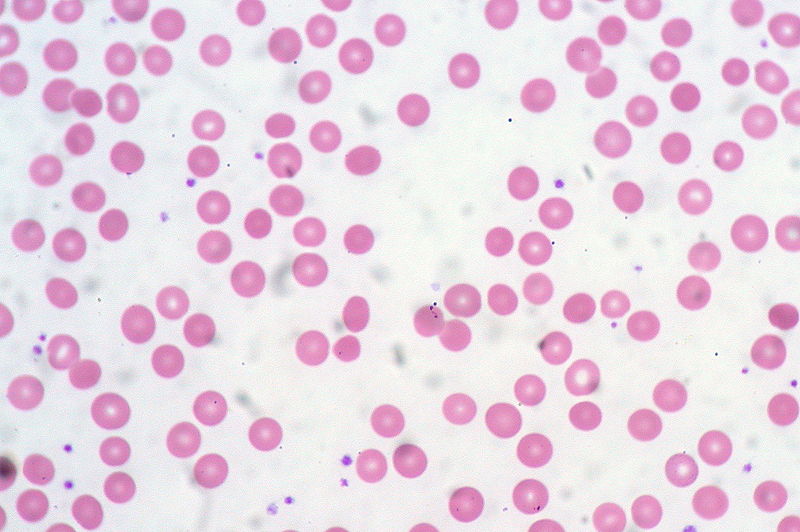Playlist
Show Playlist
Hide Playlist
Paroxysmal Nocturnal Hemoglobinuria (PNH): Pnh Lab Tests
-
Slides Paroxysmal Nocturnal Hemoglobinuria PNH.pdf
-
Reference List Pathology.pdf
-
Download Lecture Overview
00:00 What else are you going to be looking for? Let me show you. Detail? Yes. Necessary? Absolutely. The details are here. 00:10 And slow down just a little bit because students are not so familiar with the flow, not in terms of the method. 00:17 But I'm not gonna go through the methodology of flow cytometry that's covered in immunology. 00:22 So if I were you, I would really know how to perform and how to interpret a flow cytometry. 00:28 But you should know that it's a graph, an X and Y, and usually they'll give you four quadrants. 00:33 Right? And in those four quadrants you might have different maybe CD markers. 00:38 So what particular CD markers do you need to know for PNH is the question. 00:42 Well here are the following. 00:45 And here are the details that are necessary for you to get your question right. 00:48 Pay attention. You'll have to memorize CD55 is DAF. 00:56 Work with me there and really, say it with me. 55 DAF. 55 DAF. 01:05 Is it part of your brain now? Good. You focus on FFFF. 01:10 So CD55 you must memorize is your DK accelerating factor. 01:15 And if there's a mutation there on flow cytometry, it will then pick it up and it will be deficient or should I say won't pick it up and so it will be deficient. So you will not find a cluster. 01:25 Meaning -- hopefully you know what I'm referring to when I'm saying flow, when I'm saying cluster. 01:31 If you don't, this will be a good time for you to review quickly how to interpret flow cytometry. 01:36 What's the other one that you wanna pay attention to and memorize? Well, this one, I'm sorry, I don't know. You need to come up with a mnemonic. 01:43 CD59 is MIRL. And MIRL stands for membrane inhibitory reactive lysis. 01:50 At this point at least get one down. CD55 and DAF. And you have CD59 MIRL. 01:57 Those are the two major CDs. Cluster. Right? Cluster designation or differentiation on flow cytometry that are not there in PNH. 02:08 So, if these are not present, who's going crazy? Who's partying all night? Complement. 02:14 What does it do? Wreaks havoc. On whom? RBCs, intravascular hemolysis, there you go. 02:21 You'll have hemoglobinuria. 02:22 The absence or reduced expression of both 59 and 55 is diagnostic of PNH. 02:29 You know this bullet point, you have completely understood what is necessary to confirm your PNH. 02:36 Now there is some others here, it's called FLAER which I'm not gonna go into detail. 02:42 Though and the other thing that I wish to bring to your attention is this. 02:45 You know that you and I -- well, we like to work on differentials and that's the way that you need to be thinking as a clinician. 02:52 Differentials, differentials, differentials. 02:54 At some point, you'll be asked to come up with differentials. 02:58 And if you just sit there like an idiot and not come up with differentials, really, it doesn't make you look good. 03:05 So here is what I'm saying. You've heard of LAP, leukocyte alkaline phosphatase. 03:10 And with PNH, you'd find this to be decreased. 03:15 What's the other differential that you should know of in which your LAP, leukocyte alkaline phosphatase is also decreased? Oh, CML. Okay. So how do you interpret this? Remember ladies and gentlemen, you'll be given the patient and the history, hemoglobinuria. 03:36 So you'll be given all the information so that you're walking through. 03:39 And if you see low LAP then, you know, just part of your confirmation process of PNH. 03:45 But what LAP does is it then measures the functionality of your neutrophils. 03:52 That's what it does. Keep that in mind. 03:54 We've discussed that in WBC pathology with CML. 03:58 You tell me quickly. This is important. 04:01 Give me a condition in which your LAP is increased. 04:05 If I tell you functionality is what it's assessing, then you'll tell me what. 04:09 Leukemoid reaction. What's that mean? An exaggerated, exaggerated neutrophil activity, maybe because your -- the appendicitis the patient had ruptured. All the neutrophils are coming in. 04:25 And what's your LAP? Elevated. 04:27 That must be clear before you move on to the next bit of information here.
About the Lecture
The lecture Paroxysmal Nocturnal Hemoglobinuria (PNH): Pnh Lab Tests by Carlo Raj, MD is from the course Hemolytic Anemia – Red Blood Cell Pathology (RBC).
Included Quiz Questions
Which of the following CD markers is present on decay-accelerating factors?
- CD 55
- CD 59
- CD 52
- CD 36
- CD 56
Which of the following CD markers marks for membrane inhibitor of reactive lysis (MIRL)?
- CD 59
- CD 52
- CD 36
- CD 20
- CD 55
For what types of cells does leukocyte alkaline phosphatase measure their functionality?
- Neutrophils
- Natural killer cells
- Lymphocytes
- Platelets
- RBCs
Which condition presents with increased leukocyte alkaline phosphatase?
- Leukemoid reaction
- Waldenstrӧm macroglobulinemia
- Paroxysmal nocturnal hemoglobinuria
- CML
- Multiple myeloma
Customer reviews
5,0 of 5 stars
| 5 Stars |
|
5 |
| 4 Stars |
|
0 |
| 3 Stars |
|
0 |
| 2 Stars |
|
0 |
| 1 Star |
|
0 |





